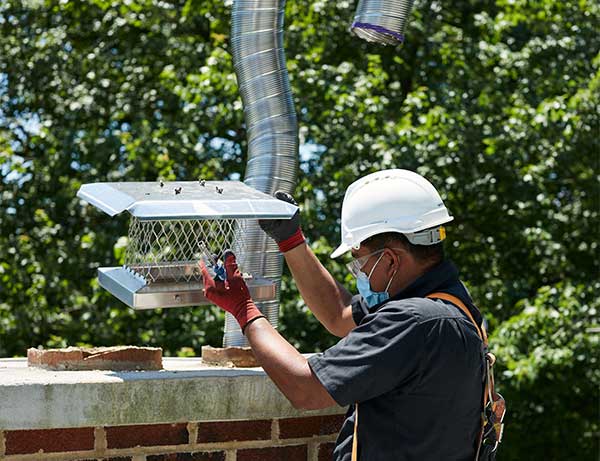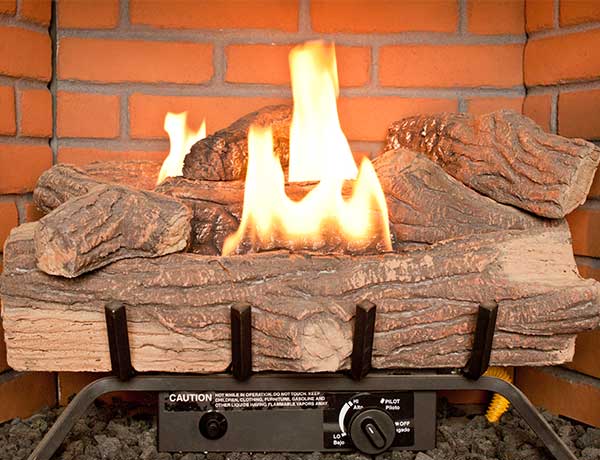There are lots of things that can threaten the structural integrity of your chimney and fireplace. Water damage, cracks and crumbling, and broken down parts are just a few of the many things sweeps check for on a regular basis. Yet, there’s something else, as well, that often gets underestimated, but plays just as big a role when it comes to causing your chimney undue stress – creosote.
What Is Creosote?
 Creosote is a highly flammable substance that builds up inside of your chimney as you burn fires. It forms especially fast when improper wood-burning techniques are used – things like burning unseasoned wood, restricting airflow, and overloading the firebox.
Creosote is a highly flammable substance that builds up inside of your chimney as you burn fires. It forms especially fast when improper wood-burning techniques are used – things like burning unseasoned wood, restricting airflow, and overloading the firebox.
That being said, even homeowners who burn as cleanly as possible need to have their system checked for creosote on a regular basis.
There are many forms that creosote can take. When your chimney is regularly swept, most creosote should remain flaky and fairly easy to remove, but the longer it goes without being addressed, the more sticky and tar-like it will become. In the worst cases, the creosote will become hard, glazed, and glossy, and special tools and products will need to be used to effectively and safely remove it.
What is stage three creosote?
Stage 3 creosote, also known as glazed creosote, is creosote that is shiny, hardened, and extremely difficult to remove. If your sweep discovers stage 3 creosote in your chimney, they may suggest some intensive treatments to clear it.
Causes of Stage 3 (Glazed) Creosote
The faster the creosote forms in your chimney, the more likely it is that is will harden into glazed creosote. You can minimize accumulation by burning only well-seasoned wood in your fireplace, ensuring you have good airflow, and by not burning at lower than normal temperatures. It is also advised to avoid overloading the firebox. Many attempt this to get a longer burn, but it can negatively impact the overall health of your system.
If you want to make certain your wood is seasoned properly and ready for use, your best bet is to season it yourself:
- Cut the wood to shorter lengths to speed up drying time, and split the ends, as well.
- Store it for at least six months, and keep it off the ground throughout this process.
- You can cover the top of the pile to keep out rain and snow, but leave the sides open to ensure the wood gets adequate airflow and sunshine.
Dangers of Creosote: All About Chimney Fires
Creosote, in general, is dangerous to have in your chimney – and level 3 creosote is especially threatening.
What is a chimney fire? Well, typically a fire burns inside of your firebox, sending fumes and smoke up and out through the chimney. In the event of a chimney fire, the fire itself will work its way up your chimney. This damages your structure and causes your brickwork and mortar to deteriorate.
If your system has undergone a chimney fire, it is important that you do not use it until it has been inspected and repaired by a certified chimney sweep. Using a system that has experienced this type of damage could put you at risk for house fires, carbon monoxide exposure, smoke pouring into your home, and more.
Unfortunately, a good majority of people will not even realize they have had a chimney fire. In these cases, the homeowner will continue to put their system to use, not realizing they are putting their entire home and family at risk. If you are concerned about the state of your fireplace or chimney, call our team for an inspection right away
How Does a Chimney Fire Damage Your System?
Well, the high temperatures cause cracking and crumbling to occur, breaking down your brickwork and mortar significantly. As these pieces continue to deteriorate, pathways are made that can allow smoke, harmful gases, and flames to escape the chimney and enter your home.
House fires and carbon monoxide exposure are both things that need to be taken seriously, as they can bring great harm to friends and family members within the home. If you’ve experienced a chimney fire, it’s vital that you call in a professional to assess the situation before building any more fires.
What Encourages Creosote Build-Up?
 Why do some fireplaces accumulate creosote faster and more abundantly than others? There are a few major contributors, and one is due to a lack of sufficient make-up air running through the chimney. This could be caused by a closed or mostly closed damper, closed glass doors, or inefficient airflow through the home.
Why do some fireplaces accumulate creosote faster and more abundantly than others? There are a few major contributors, and one is due to a lack of sufficient make-up air running through the chimney. This could be caused by a closed or mostly closed damper, closed glass doors, or inefficient airflow through the home.
Another major cause of creosote build-up is homeowners burning objects other than properly seasoned wood in their fireplace. Garbage, unseasoned wood, leftover wrapping paper, paper plates/cups, and similar items all send up harmful toxins through your chimney and contribute to a greater accumulation of creosote.
Lastly, your smoke may be too cold. This relates to the unrecommended practice of burning unseasoned wood in your stove or fireplace. Unseasoned wood takes up more energy due to the extra moisture it contains, which makes smoke and fireplace temperature cooler. These cooler temperatures lead to creosote buildup in your chimney. Seasoned wood is always your best bet when it comes to fueling your fire!
DIY Creosote Removal?
It is very risky to DIY chimney sweepings or creosote removal.
Coming into contact with the substance can cause serious eye and skin irritations and, if inhaled, it can cause serious respiratory issues. A trained chimney sweep will know how to safely rid the chimney of the creosote and they will have the tools to do it properly. Although small fireplace and chimney maintenance can be done at home, a professional chimney cleaning is a must for the sake of everyone’s safety.
Don’t Wait – Call On Our Team
When it comes to chimney care in Northern Virginia, we can provide you with the highest levels of satisfaction and care possible. You deserve the best, so work with our team from here on out to get everything you are looking for and more. Our sweeps are ready to set up an appointment with you today.
Call or book online now.



